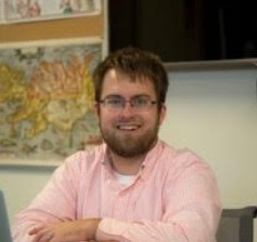Reality and Creation

By Josh Herring
The Gadamerian concept of play and interpretation fits into a larger context of intelligent creativity.
In his Triumph of the Modern Self, Carl Trueman offers a brilliant explanation of a tension driving contemporary classical education. He analyzes two Greek terms, poiesis and mimesis, and suggests that education is concerned with both. Mimesis refers to living in alignment with reality. The human animal lives in a certain kind of reality, and as he becomes more aware of that reality, his living must shift so that he accommodates himself to what is real. However, Trueman argues, mimesis alone is not enough. Poiesis describes the way that humans make more of the world. The term is the etymological source of poet and poem, connoting the imaginative work of crafting and sharing stories within a structured form. Trueman extends the term to fit Andy Crouch’s definition of culture as developing potentiality into actuality. Seeing dirt, envisioning a thriving garden, and then planting, cultivating, and harvesting are all part of Trueman’s vision of poiesis. These two terms help provide a vision of what classical education is, and why the conversation about it never ends.
A classical education strives for both mimesis and poiesis. We want students to comprehend reality in all its fullness: mathematical, scientific, linguistic, and technical arts lend themselves to a strong awareness of what is. At the same time, we recognize that each student is possessed of a conscience, desires, hopes, and dreams: literature, history, philosophy, and the arts of the Trivium help students develop their poietic capacities, enabling them to go forth from a classical education making much of the world. The humanities encourage students to consider, for themselves and for the world, what could be. Poiesis and mimesis form a symbiotic relationship in education—infinite creativity without concern for reality leads to chaos, while rigid knowledge without the possibility of change causes stagnation. These two domains of knowledge complement and reinforce each other. Building a house involves knowledge of reality—plumbing, framing, and pouring concrete are not matters of creativity, but functionality. Painting, decorating, and the overall architectural design allow a building to become a home. For full human flourishing, each person needs a strong mimetic awareness of what is real; within that awareness lie almost infinite poietic possibilities for creative freedom.
The work of art that says something confronts us itself. That is, it expresses something in such a way that what is said is like a discovery, a disclosure of something previously concealed.
Hans-Georg Gadamer, Philosophical Hermeneutics
A classical education, then, exists in the perpetual play between teaching students what is real and summoning them to creatively cultivate themselves in alignment with reality. Student interests, passions, and ideas must fit within their understanding of reality. As these two domains of thought come together, students rise to comprehend what is implied in Russell Kirk’s definition of politics as “the art of the possible.” There is in this vision of classical education a spontaneity, a sense of organic process that can be planned but not predicted; education becomes a complex dance involving the irreproducible combination of students and teachers at a given point of time where those who have been shaped by their encounter with the liberating arts apply wisdom, prudence, and effort to help students encounter the real and understand the possibilities inherent in the mystery of being, to perceive the ways their lives are constantly in play.
We describe children “at play;” we tell children to “go play.” We recognize the importance and value of play, yet the term goes beyond games and joie de vivre. It also describes the Gadamerian sense of movement between fixed points, and helps conceptualize the classical renewal movement. Even if every school were a classical school, the movement would continue as each school finds their location within the play between mimesis and poiesis.
The classical education world is a wonderful conversation. Something of what we do each day is shaped by the thoughts of such towering figures as John Henry Newman, Edmund Burke, and C. S. Lewis. But it is also shaped by the thoughts, experiences, and questions of each generation of faculty and students, as they seek to inherit the tradition, steward it, and pass it on in their turn. Copeland’s essay reflects just such a spirit, and hopefully this conversation in essays will bear some small fruit in encouraging classical teachers in the good work they do.
Josh Herring, M. Div., is Dean of Students, Head of Debate, and a Humanities Instructor for Thales Academy Rolesville JH/HS. In his spare time, he is working on a PhD in Humanities through Faulkner University’s Great Books Honors College. He also co-hosts What’s the Res?, a podcast for the high school debate community. He and his wife Jennifer live in Wendell, NC.
___________________________________________________________________________________
If you liked this series, you might also enjoy this author profile of John Bunyan, these “Great Conversation” posts about the history of the family and the idea of immortality, or this student essay on whether power truly does corrupt. And be sure to check out our podcast, Anchored, where our founder Jeremy Tate sits down with leading intellectuals to discuss education, policy, and culture.
The page image is a closeup of a version of William Blake’s watercolor The Ancient of Days.